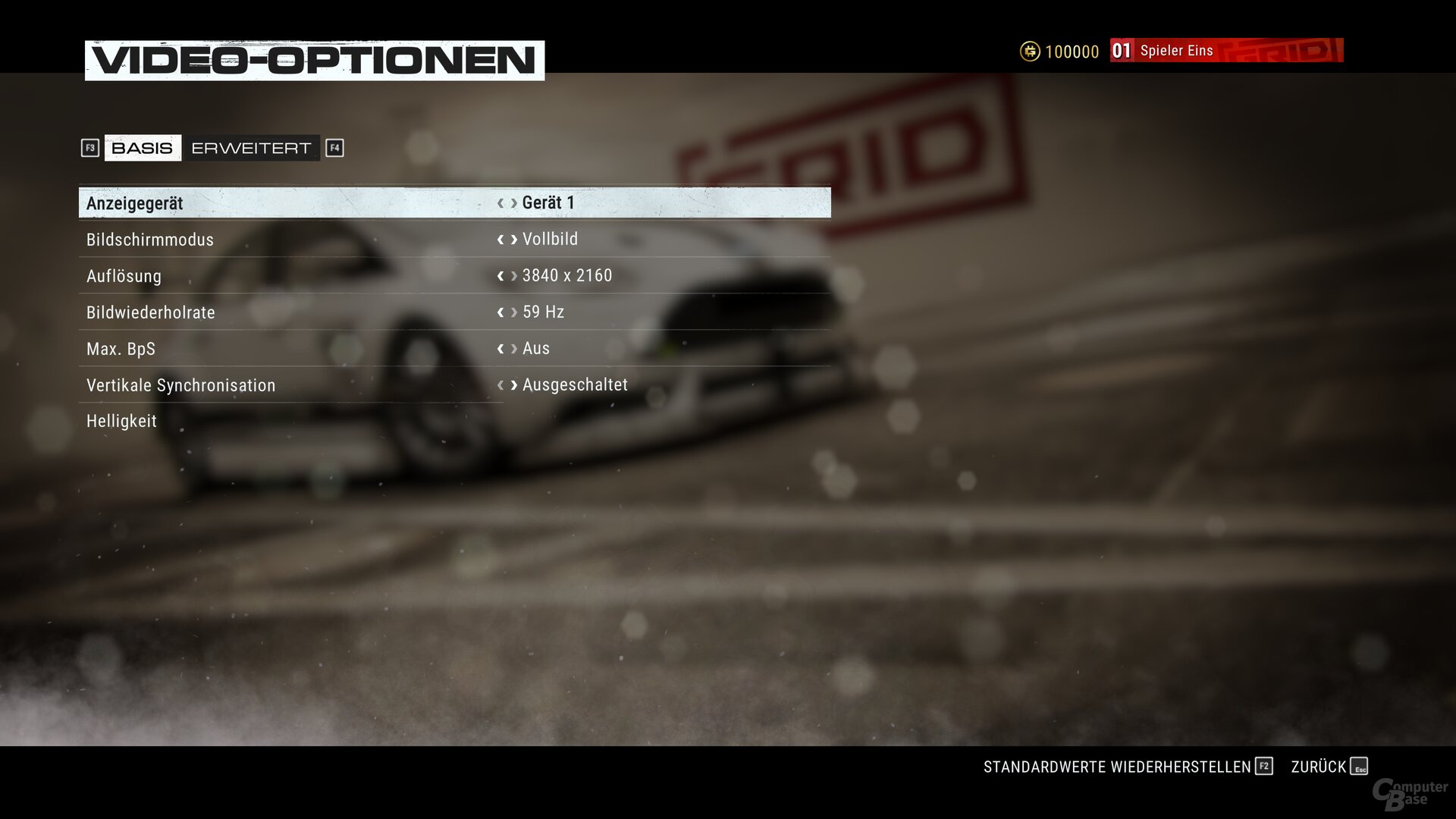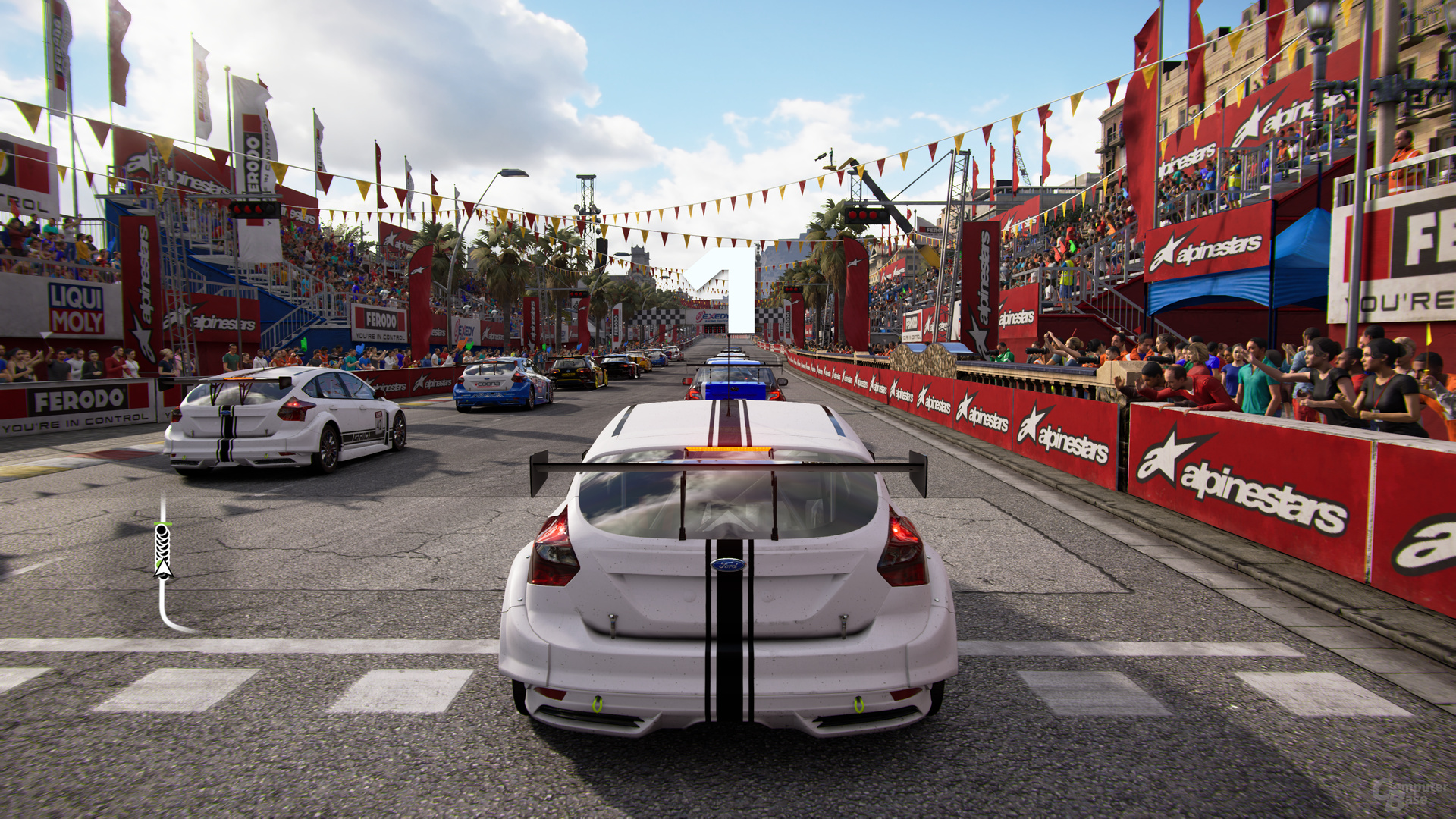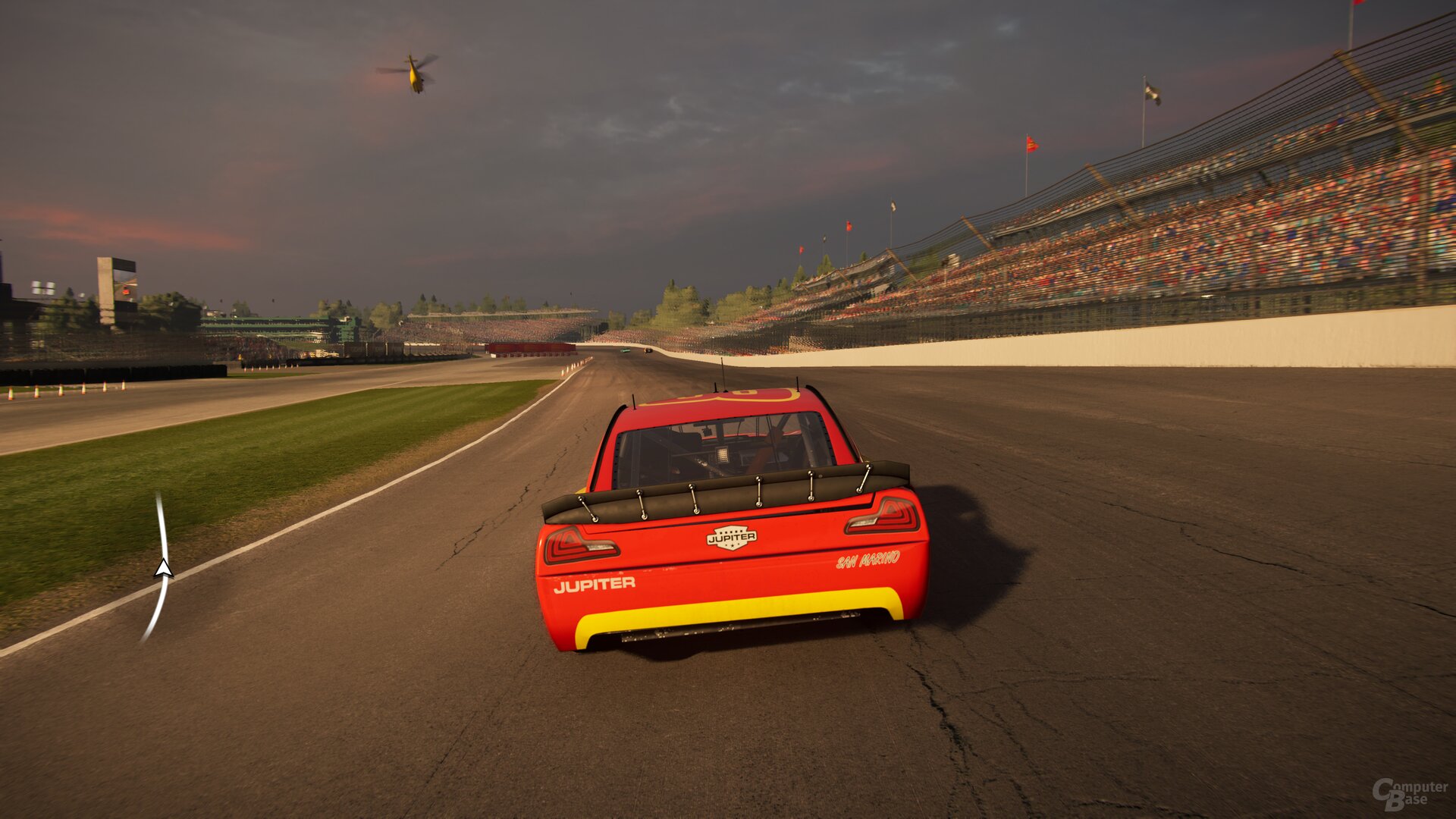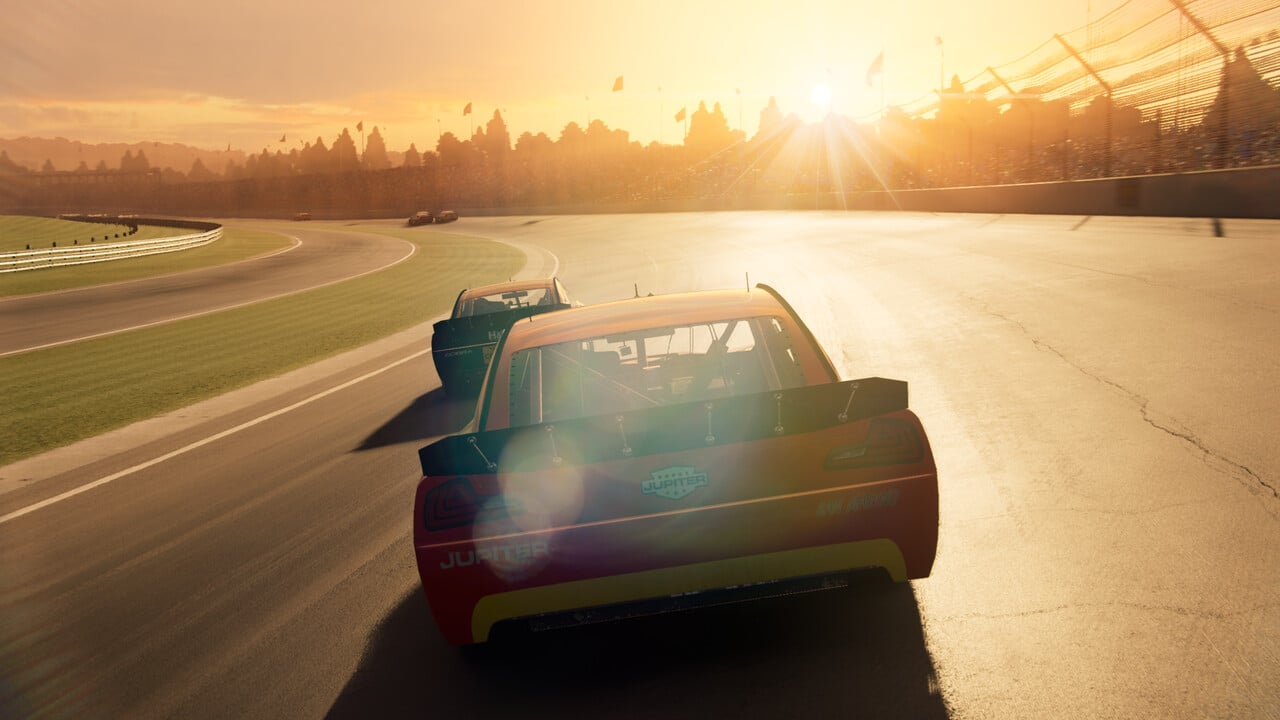– The arcade frenzy of the grid series goes into the next round: as a reboot, which is simply called the grid. The PC version of the DirectX 12-exclusive grid has to prove itself in the benchmark and shows good performance, but also has to struggle with errors in places.
Codemasters has three different racing series in its product portfolio: The annual official game for Formula 1, which, like last time with F1 2019, is getting better and better. And the dirt series, which has meanwhile been trimmed for realism, and has received a good, further spin-off with Dirt Rally 2.0. The third series is the grid, which is trimmed to an arcade, but the last part, Grid Autosport, was hardly convincing. Since 2014, the series has also entered a phase of discovery. And with the new part, which is simply called the Grid, things should go up again.
Grid uses the EGO-2 engine of the F1 series
The in-house EGO engine is used as the basic technical framework. And, unlike in the Dirt series, it seems, albeit in a stripped-down version, to be the current version EGO 2.0, which is otherwise used in the F1 series. Slimmed down because there are a few features in F1 2019 such as FidelityFX that are missing in Grid. The graphics themselves do not reach the level of F1 2019.
Anti-aliasing creates graphic errors
Grid still looks neat and sometimes nice. But it is not enough for more. The car models look good as usual and are the visual highlights of the game in connection with the different times of the day. The environment, on the other hand, looks much less chic. In addition, depending on the route, Grid has to deal with violent graphics errors. Temporal anti-aliasing has some difficulties with the display of fences and bleachers. If there are many of these and they are close to the route, the anti-aliasing calculates the corresponding objects incorrectly and they smear. This is not only ugly, it also distracts from driving. A problem that Codemasters has to fix as soon as possible.
DirectX 12 is the only API
Grid is the first game from Codemasters to exclusively use the low-level API DirectX 12. With this, the EGO-2 engine takes the next logical step. Because for F1 2017 Codemasters gave lectures about DirectX 12 for the first time – but the API was missing in the game. For F1 2018, DX12 was then submitted via beta patch, but there were still problems. Since F1 2019, DirectX 12 has been officially selectable for the first time in the game next to DirectX 11. And with Grid, DirectX 11 has disappeared as the next logical step. DirectX 12 is the only API available. Windows 10 is therefore automatically a prerequisite for grid.
The PC version of Grid offers a simple graphics menu that is almost exclusively limited to the bare essentials. There are graphics presets and several individual graphics options to adapt the quality to the performance of your own computer. An FPS limiter can be activated with the settings 30 FPS, 60 FPS, 120 FPS and 144 FPS. However, there are no other setting options.

The menu itself is also very simple. Descriptions of the individual options as well as comparison screenshots are missing. Even the benchmark function usual for Codemasters games does not exist in Grid. Neither in the options menu, nor hidden by command line command.
Five graphic presets with some minor differences
Grid offers five different graphic presets: “Very Low”, “Low”, “Medium”, “High” and “Ultra High”, whereby Ultra High also shows the maximum graphic details. The optical difference between ultra high and high is small, but it is there. The surrounding occlusion is more pronounced with ultra-high, the shadows are softer and the visibility is slightly better. What is not noticed on screenshots, but in motion, is a more aggressive LOD in the high preset, which lets some objects appear from nowhere again and again.
With the medium preset, the surrounding obscuration is then completely eliminated, and the rows of spectators are also slightly thinned out. With the low preset, the number of viewers drops significantly and the shadows have hardly any details. In addition, anti-aliasing is switched off. With the setting Very Low, the audience is completely absent and especially when moving, the optics suffer greatly. Up to and including the middle preset, the optical losses are acceptable to get more power if necessary.

If you use high instead of ultra-high, you get a very big performance boost. The GeForce RTX 2070 delivers 52 percent more FPS, the Radeon RX 5700 XT even 65 percent. It’s quite rare that there are bigger performance differences between AMD and Nvidia with different graphics options. However, the extreme increase in frame rate is even rarer. The middle setting then only brings another ten or nine percent. Here Codemasters should have configured the presets better.
Graphics presets in grid
- Very-Low-Preset
- Low-Preset
- Central Preset
- High-Preset
- Ultra high-Preset
The anti-aliasing works well but is faulty
Grid only offers TAA as anti-aliasing, which according to the name offers a temporal component and thus also smoothes vegetation. The TAA processes the entire image effectively, all objects are captured. Even in low resolutions like Full HD, the anti-aliasing works well, the flickering is massively reduced and almost completely disappears from WQHD. The image blurring that usually occurs is hardly noticeable.
So far so good. However, as already noted, the TAA also generates graphic errors. These are not noticeable on most routes. On the other hand, all the more so. For some objects, the temporal component may have difficulty combining image information from previous frames. Then there is the effect that these objects become blurred in motion. The problem affects fences and some bleachers that are close to the player’s camera. Since the errors are very bothersome and distracting, Codemasters should fix them as soon as possible.


6 GB are sufficient for average textures
The textures in grid are average. The cars have very detailed surfaces, but all other objects are less detailed. However, this is not too tragic because it is no longer noticeable in motion. The graphics memory hunger is limited. Because a graphics card with 6 GB is just enough in Ultra HD for the maximum texture details. With 8 GB you are completely on the safe side.
On the next page: GPU, CPU benchmarks, frame times and the content
















